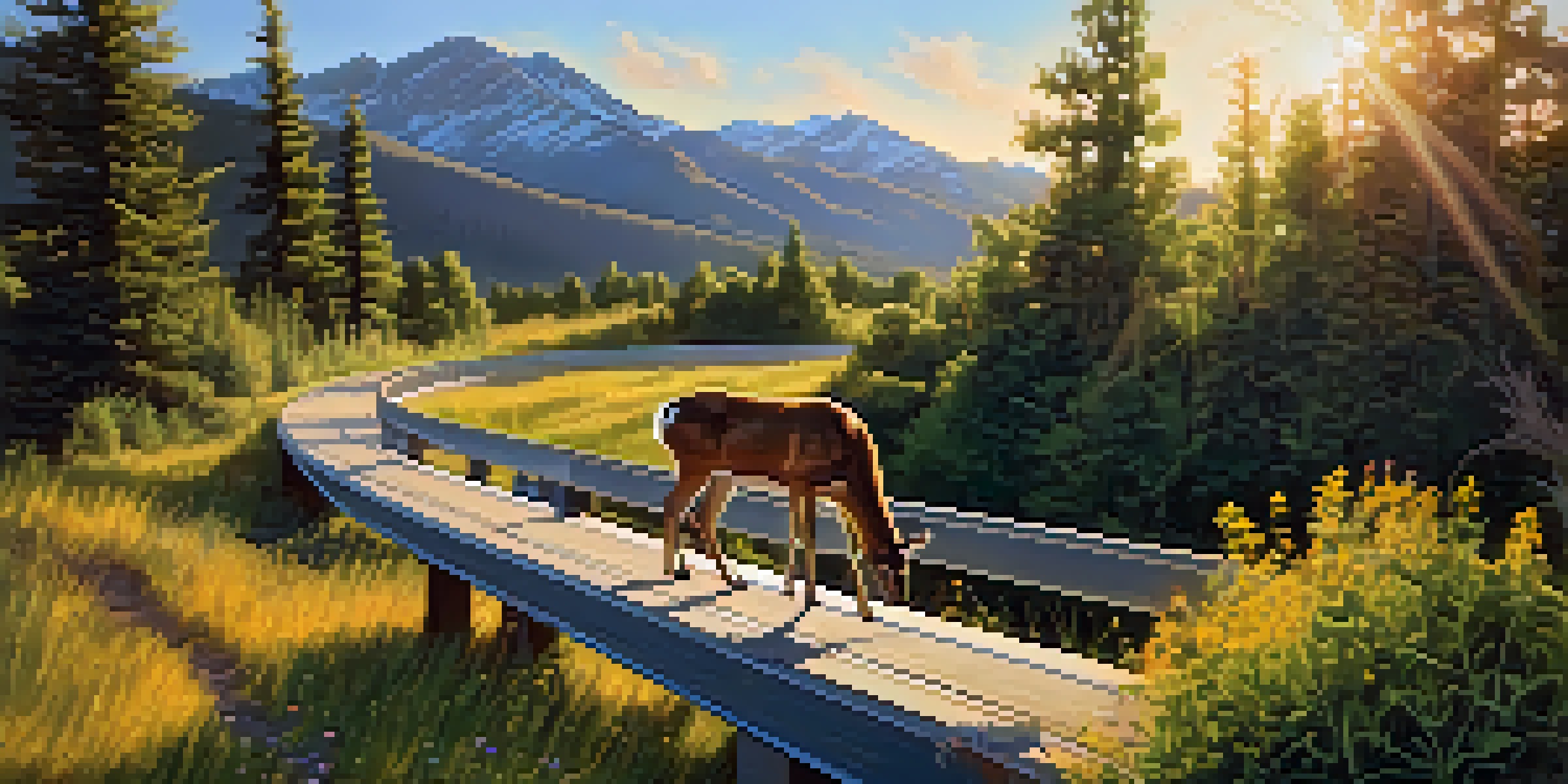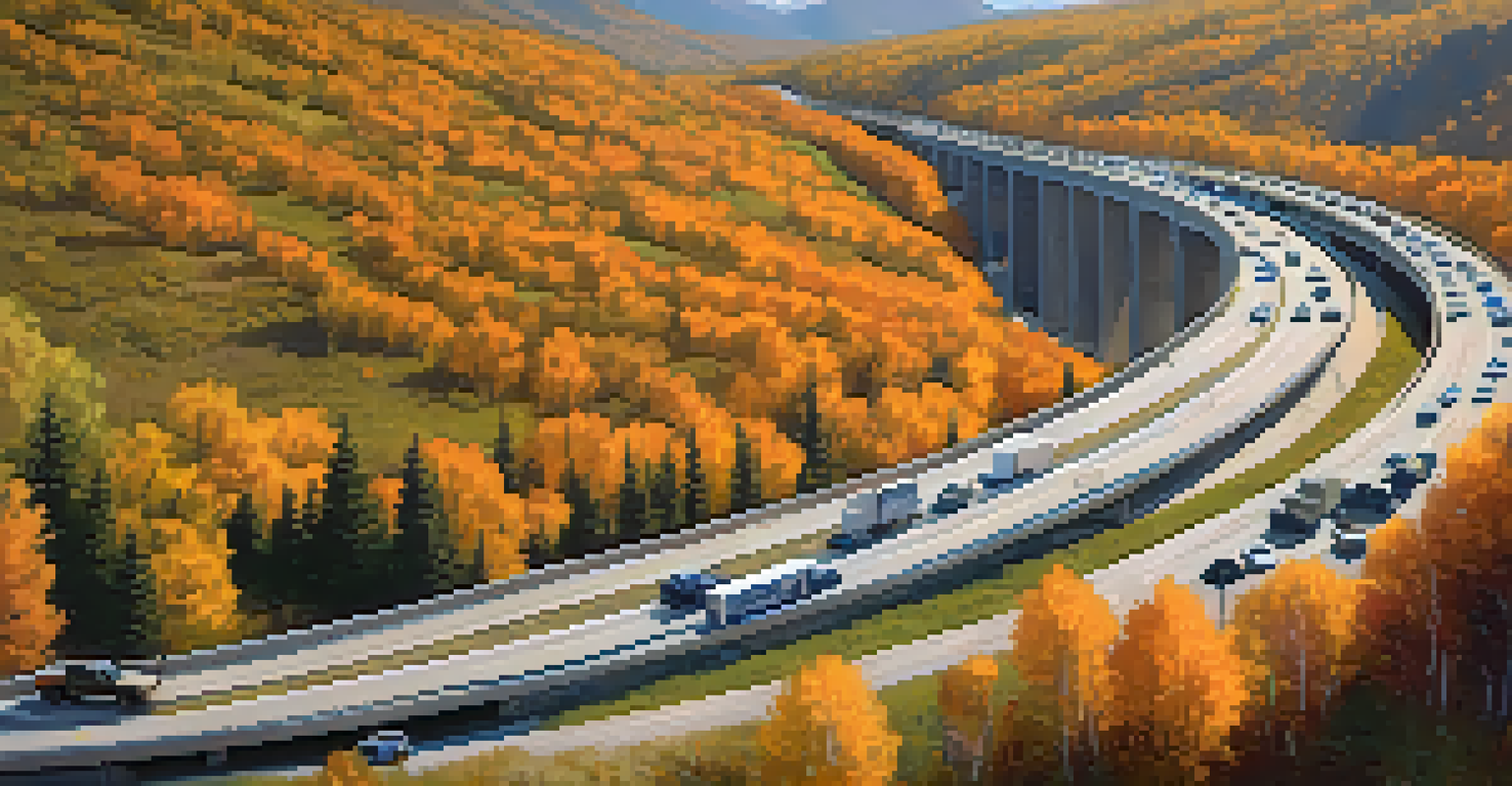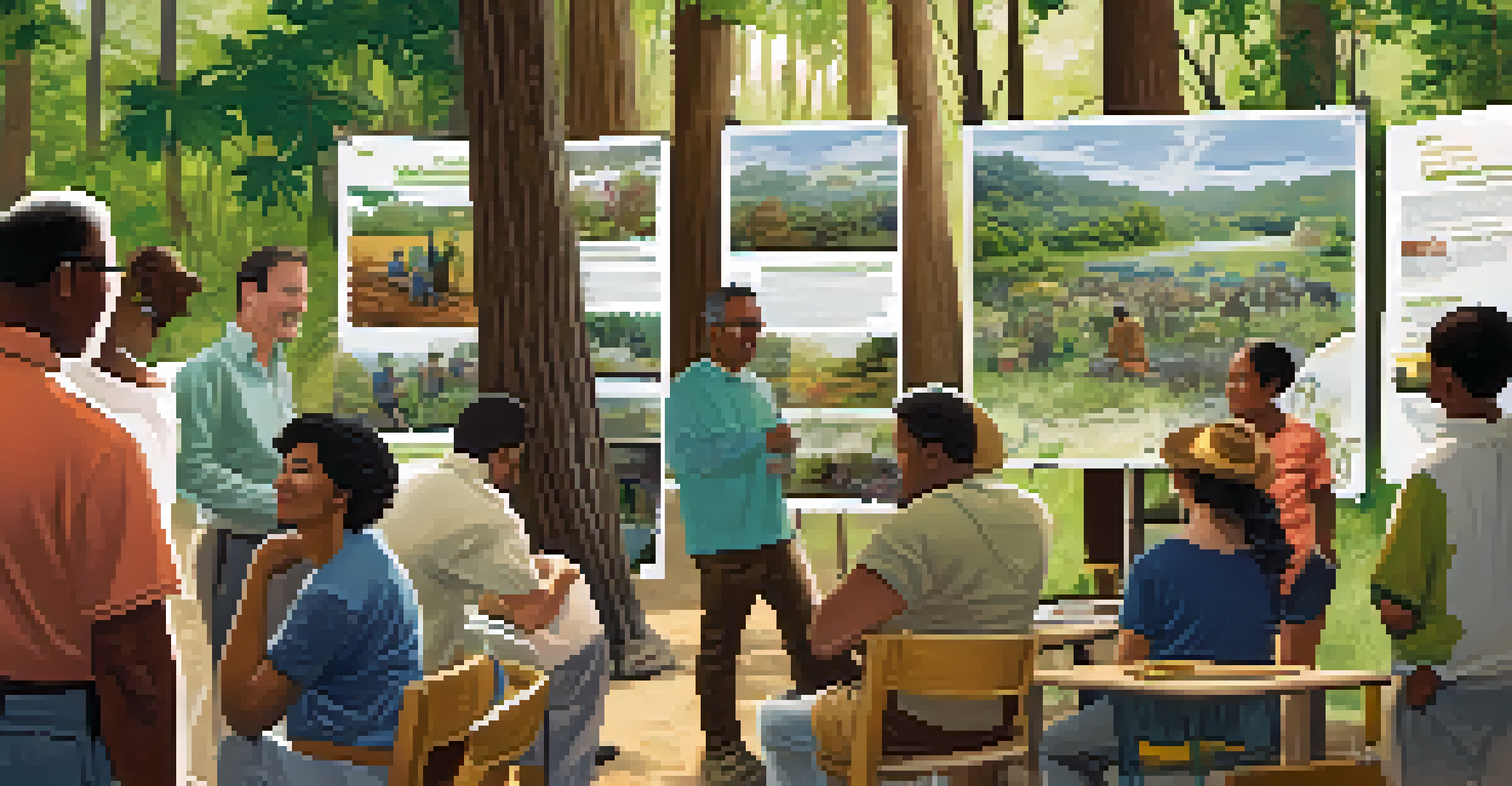Understanding Colorado's Wildlife Corridors and Their Importance

What Are Wildlife Corridors and Why Do They Matter?
Wildlife corridors are natural pathways that allow animals to move safely between habitats. They are essential for maintaining biodiversity, supporting species migration, and preventing inbreeding. Think of these corridors as highways for wildlife, where they can travel without the risk of getting lost or harmed.
The greatest danger in times of turbulence is not the turbulence; it is to act with yesterday's logic.
In Colorado, these corridors play a crucial role in connecting fragmented habitats. As urban development expands, wildlife often find their natural routes blocked, leading to isolation. By preserving these corridors, we ensure that animals can thrive, reproduce, and maintain healthy populations.
Moreover, wildlife corridors contribute to ecosystem health by allowing species to interact and thrive in a balanced environment. Just like how humans rely on roads for travel, animals depend on these corridors for their survival. Protecting them is not just about saving animals; it's about preserving our natural heritage.
Examples of Wildlife Corridors in Colorado
One of the most notable examples of wildlife corridors in Colorado is the Highway 9 corridor near Silverthorne. This area has been enhanced with wildlife overpasses and underpasses, allowing animals like deer and elk to cross safely. These structures are designed to mimic the natural landscape, helping animals feel secure while they navigate these busy roads.

Another significant corridor is the I-70 wildlife corridor, which stretches through the Rocky Mountains. This corridor is vital for the migration of large mammals, such as bears and mountain lions, who often face dangers from vehicle collisions. Creating safe passageways not only aids the animals but also reduces accidents, benefiting both wildlife and humans.
Wildlife Corridors Are Essential
These natural pathways enable safe animal movement between habitats, supporting biodiversity and species survival.
These examples highlight the importance of strategic planning in preserving wildlife corridors. They showcase how human ingenuity can create solutions that respect nature, ensuring that wildlife can continue their age-old migrations while coexisting with urban development.
The Role of Local Communities in Protecting Corridors
Local communities play a pivotal role in protecting wildlife corridors. Engaging residents and stakeholders in conservation efforts fosters a sense of ownership and responsibility towards the environment. When communities come together, they can advocate for policies that prioritize the preservation of these routes.
We won't have a society if we destroy the environment.
Educational programs and outreach initiatives can also help raise awareness about the significance of wildlife corridors. For instance, community workshops can teach residents how they can support local wildlife by advocating for green spaces and sustainable land use practices. The more informed the community, the stronger the support for wildlife conservation efforts.
Additionally, local volunteer groups often participate in habitat restoration and monitoring projects. These hands-on efforts not only protect the corridors but also strengthen community bonds. When people work together for a common goal, they cultivate a deeper appreciation for their natural surroundings.
Challenges Facing Wildlife Corridors in Colorado
Despite their importance, wildlife corridors in Colorado face several challenges. Urban development continues to encroach on natural habitats, fragmenting the landscape and making it difficult for animals to traverse. This can lead to increased roadkill and decreased genetic diversity among animal populations.
Climate change also poses a significant threat. Altered weather patterns can impact animal migration routes and the availability of food and water. As habitats shift, wildlife corridors may need to adapt, or animals might find themselves stranded in unsuitable environments.
Community Involvement is Crucial
Local residents play a vital role in advocating for wildlife corridor preservation and engaging in conservation efforts.
Furthermore, public perception can be a hurdle. Some people may not understand the value of wildlife corridors and may prioritize development over conservation. Raising awareness and fostering a conservation mindset are essential to overcoming these obstacles and ensuring the future of Colorado's wildlife corridors.
How Wildlife Corridors Benefit Ecosystems
Wildlife corridors are not just vital for individual species; they benefit entire ecosystems. By allowing animals to roam freely, these corridors help maintain genetic diversity, which is crucial for resilience against diseases and changing environmental conditions. A diverse gene pool is like a safety net for wildlife, providing them with a better chance of survival.
Furthermore, healthy wildlife populations contribute to ecosystem balance. Predators, for example, control the population of herbivores, which in turn affects vegetation growth and overall habitat health. This interconnected web illustrates how wildlife corridors support a thriving ecosystem, benefitting all species, including humans.
Additionally, wildlife corridors can enhance recreational opportunities for people. They provide spaces for hiking, birdwatching, and photography, allowing humans to connect with nature. In this way, wildlife corridors serve as a bridge not only for animals but also for people seeking to experience the beauty of Colorado's natural landscapes.
Innovative Solutions for Corridor Preservation
Innovative solutions are emerging to enhance the effectiveness of wildlife corridors in Colorado. One approach involves using technology, such as GPS tracking, to monitor animal movements and identify critical crossing points. This data can help inform infrastructure planning, ensuring that new developments consider wildlife needs.
Another exciting development is the use of wildlife-friendly fencing. These fences not only keep animals off roads but also guide them towards safe crossing areas. By combining traditional barriers with strategic design, we can create safer environments for wildlife and reduce human-animal conflicts.
Challenges Threaten Wildlife Corridors
Urban development, climate change, and public perception are significant challenges that jeopardize the effectiveness of wildlife corridors.
Community involvement is also key to these innovations. By encouraging local participation in conservation projects, we can foster a culture of stewardship. When everyone plays a role in protecting wildlife corridors, we create a more sustainable future for both animals and humans alike.
The Future of Wildlife Corridors in Colorado
The future of wildlife corridors in Colorado looks promising, thanks to ongoing conservation efforts and community engagement. As awareness grows about the importance of these natural pathways, more people are advocating for policies that prioritize wildlife protection. This shift in mindset is crucial for preserving Colorado's rich biodiversity.
Additionally, collaboration between government agencies, non-profits, and local communities is key to successful corridor preservation. By working together, these groups can pool resources, share knowledge, and implement effective conservation strategies. This teamwork enhances the chances of overcoming the challenges facing wildlife corridors today.

Ultimately, the future hinges on our collective commitment to protect these vital ecosystems. By valuing wildlife corridors and understanding their significance, we can ensure that Colorado remains a haven for diverse wildlife for generations to come.